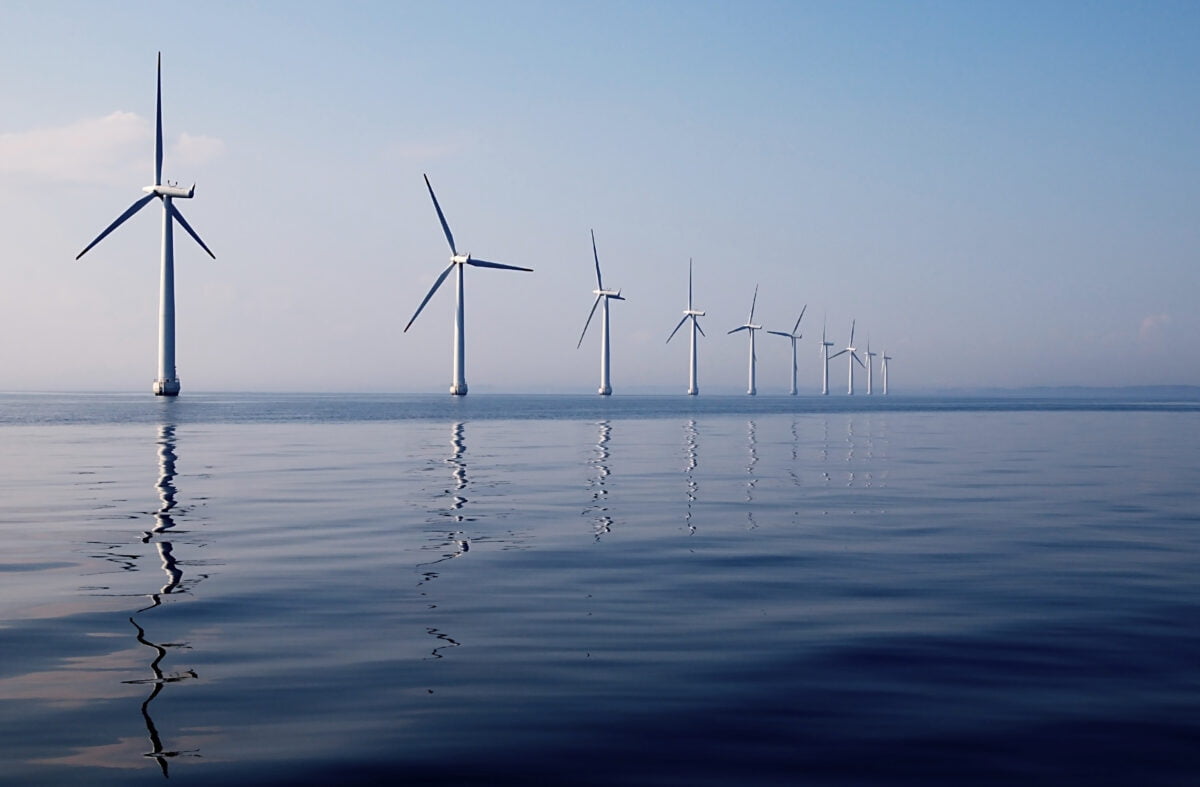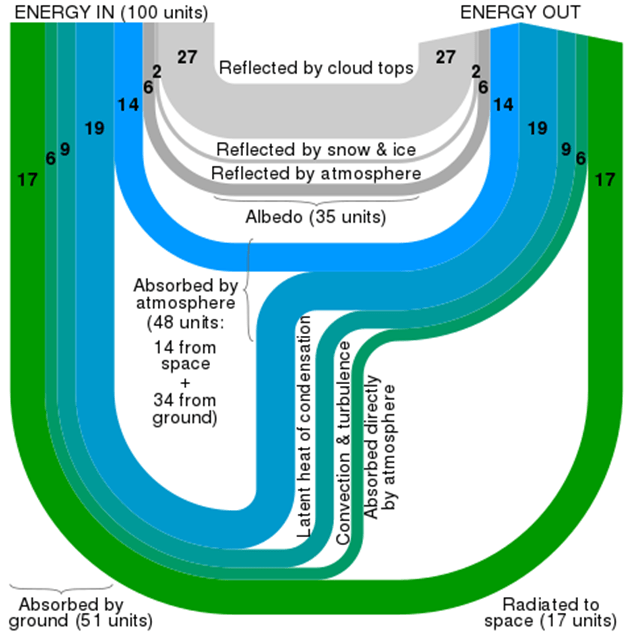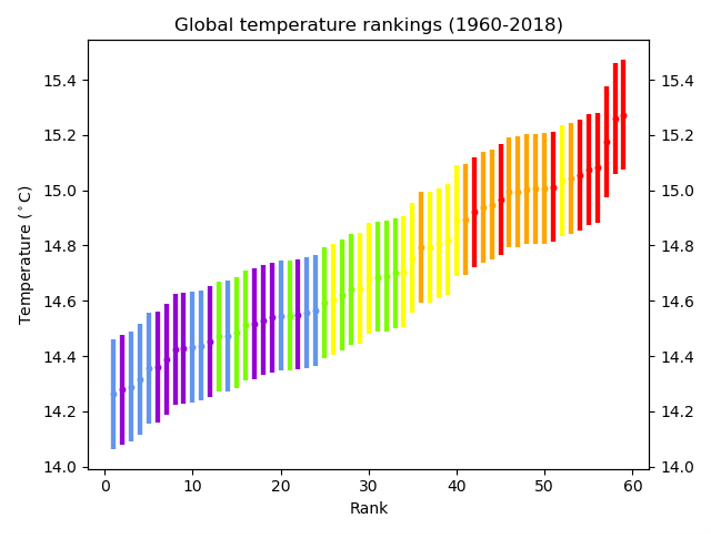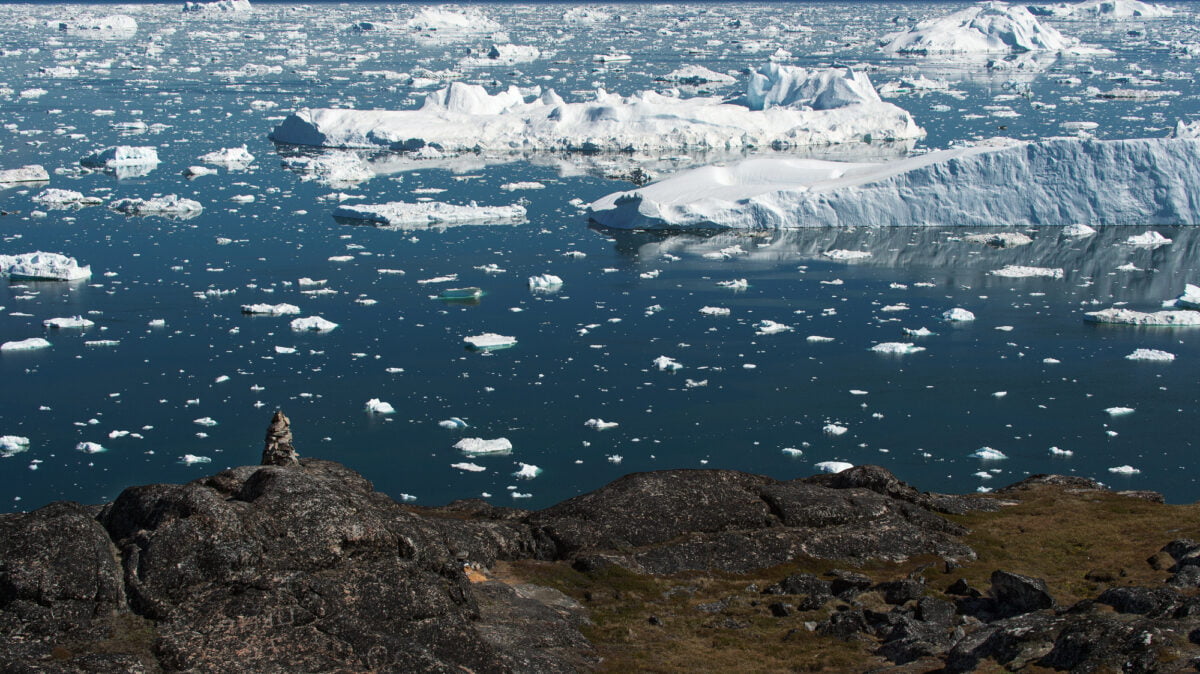

This is a data skills exercise linked to FAQ1.2 of the sixth assessment IPCC report of 2021. The aim of this resource is to answer the question: to what extent do impacts of climate change vary around the world? which you should be able to answer at the end of this resource. It was written with the Royal Geographical Society with IBG.
Temporal change
Weather and climate are two separate phenomena that change over time. Read about the distinction on the Met Office webpage So what is weather, and what is climate?
- Robert Heinlein said, ‘climate is what you expect, weather is what you get’. What did he mean?
- What could you say about the climate over the last 10-years? 70-years? Go to the NASA webpage Climate Change: How Do We Know? to use evidence in your answer.
Imagine you had been monitoring land surface temperatures at the same location for the past 70 years. Consider what, if any, changes would have been recorded.
- The UK is a mid-latitude country in the northern hemisphere. Use Table 1 to draw a line graph for UK temperature since 1950. Have average annual temperatures increased in the UK since 1950? Your x axis should range from 1950 to 2020, and your y axis should range from -20°C to 25°C.

Figure 1 a melting glacier in Scoresby Sound, Greenland © Andy Brunner. For more on Icelandic climate change watch After Ice
a) Is a line graph an appropriate graph?
b) What is the disadvantage of using annual mean data?
Spatial change
Varying changes to climate are becoming more apparent between geographic locations. The largest long-term warming trends have been recorded in the high northern latitudes e.g., Siberia, Iceland, Alaska and Canada, and the smallest warming trends over land are in Tropical regions.
4. Canada is a predominantly high latitude country in the northern hemisphere. Quantify the latitude range for a low-latitude, mid-latitude, and high latitude country.
5. Use Table 2 to add another line onto your graph charting average annual temperature for Canada.
6. India is a low-latitude country in the northern hemisphere. Use Table 3 to add a line onto the line graph charting average annual temperature for India.
7. Which country has experienced the greatest level of climate change: the UK, Canada, or India?
8. Explain why one country is experiencing greater warming than the others? Research different sources of evidence, such as Arctic Amplification and this article why is the Arctic warming faster than other parts of the world?

Figure 2 capital cities of Canada’s provinces and territories © WorldAtlas.com
It is important to appreciate that changes can occur locally within countries. These changes are on a smaller spatial scale and are often masked by country-to-country comparisons.
Alert in Nunavut, Canada, is the most northern continuously inhabited place on Earth. Lytton is in the southwestern province of British Colombia.
9. Use Table 4 and 5 to add the data onto your line graph from the Alert and Victoria weather stations.
a) Is there climate change variation in Nunavut (the Alert weather station)?
b) Is there climate change variation in British Colombia (the Lytton weather station)?
c) Which location has seen the greatest level of climate change between 1950 and 2020?
Further work
Access the following resources for suggested further work on where climate change is most apparent.
- Watch the After Ice documentary by the University of Iceland Research Centre
- In June 2021 a heat wave struck British Colombia and much of the west coast North America. To learn more about the event access The Canadian heatwave
- The western North American heat wave was described as an Omega Block, which you can learn more about on the Met Office webpage Blocking patterns
- From 1948 to 2020, there has been a 8°C warming trend in average annual temperatures in Canada.
- Canada is warming twice as fast as the rest of the world
- Record-breaking ‘pressure-cooker’ heatwave hits Canada, US northwest
- For further information on temperature variation in Canada visit Climate Trends and Variations Bulletin – Annual 2020
- Do your findings match with average annual temperature data for another Tropical country, such as Kenya? Go to the World Bank Climate Change Knowledge Portal and compare
- The Royal Meteorological Society What is Climate Change?
Exam-style question
Using all the work you have completed answer the final question below. The instruction to what extent means you must form and express a view as to the validity of a statement after examining the evidence available and different sides of an argument.
For further help access the Show Your Stripes website from the University of Reading. Select your region and country.
10. To what extent does climate change vary around the world?
Appendix A



Answers
- Robert Heinlein conveyed the unexpected nature of weather, and its changeable behaviour over the short-term.
- Over the last 70-years the climate has changed dramatically due to an increase in the greenhouse effect. For millennia carbon dioxide (CO₂) had never risen above the 300 ppm (parts per million) but in 2015 atmospheric CO₂ concentration crossed the 400 ppm threshold, an unprecedented moment in the history of modern humans on this planet. Most of the warming has occurred in the past 40 years. The last decade, the 10 years to the end of 2019, have been confirmed as the warmest decade on record by three global agencies.
- As instructed.
- Low-latitude countries are found between the Equator 0° and 30° north and south. The mid-latitudes are found between 30° and 60° north and south. High latitude is between 60° north and south and the poles.
- As instructed.
- As instructed.
- From your graph it should be clear that between 1950 and 2020, the UK warmed by 1.32°C, whilst India changed by 1.37°C. Canada has experienced the greatest level of climate change with 2.41°C of warming. A source for comparison for your answers is the Met Office Climate change in the UK
- This is because Canada is a high northern latitude country. For more information search (Ctrl +F) ‘high latitude’ in chapter 3 of the IPCC report executive summary. The text explains that large and widespread differences are expected regionally for temperature extremes. Extracts from the chapter include:
- Hot extremes are expected to occur at mid-latitudes in the warm season with increases of up to 3°C for 1.5°C of global warming, and 4°C for 2°C of global warming (a factor of 2)
- At high latitudes greater extremes are predicted. In the cold season increases of up to 4.5°C at 1.5°C of global warming are expected, and 6°C for 2°C of global warming (a factor of 3)
- The strongest warming of hot extremes is projected to occur in central and eastern North America, central and southern Europe, the Mediterranean region (southern Europe, northern Africa, and the Near East), western and central Asia, and southern Africa
- Whilst the number of exceptionally hot days are expected to increase the most in the tropics, where interannual temperature variability is lowest. Extreme heatwaves are projected to emerge earliest in these regions and will become widespread there at 1.5°C global warming
The reason why the Arctic in particular is recording record temperature rises is due to the loss of Arctic sea-ice. When white, bright and reflective sea ice melts it exposes the darker ocean beneath. This amplifies the warming trend because the ocean absorbs more heat from the sun, which causes further melting. Loss of Arctic sea-ice is described as a positive feedback loop (of accelerating decline) and, ultimately, a tipping point for planet Earth.
- There is a large climate variation both within these Canadian provinces and between them.a) The Alert weather station has recorded temperature variation with a warming of 3.5°C. b) The Lytton weather station has seen temperature variation with a warming of 2.4°C. c) The Alert weather station has a temperature average of -17.4°C whilst Lytton has 9.4°C. When temperature change is compared between 1950 and 2020, the Alert weather station has experienced the greater level of variability. This shows climate change does vary around the world, indeed even within countries. It also adds further evidence to the argument that climate change is occurring faster in high-latitude regions.
- As instructed.
















